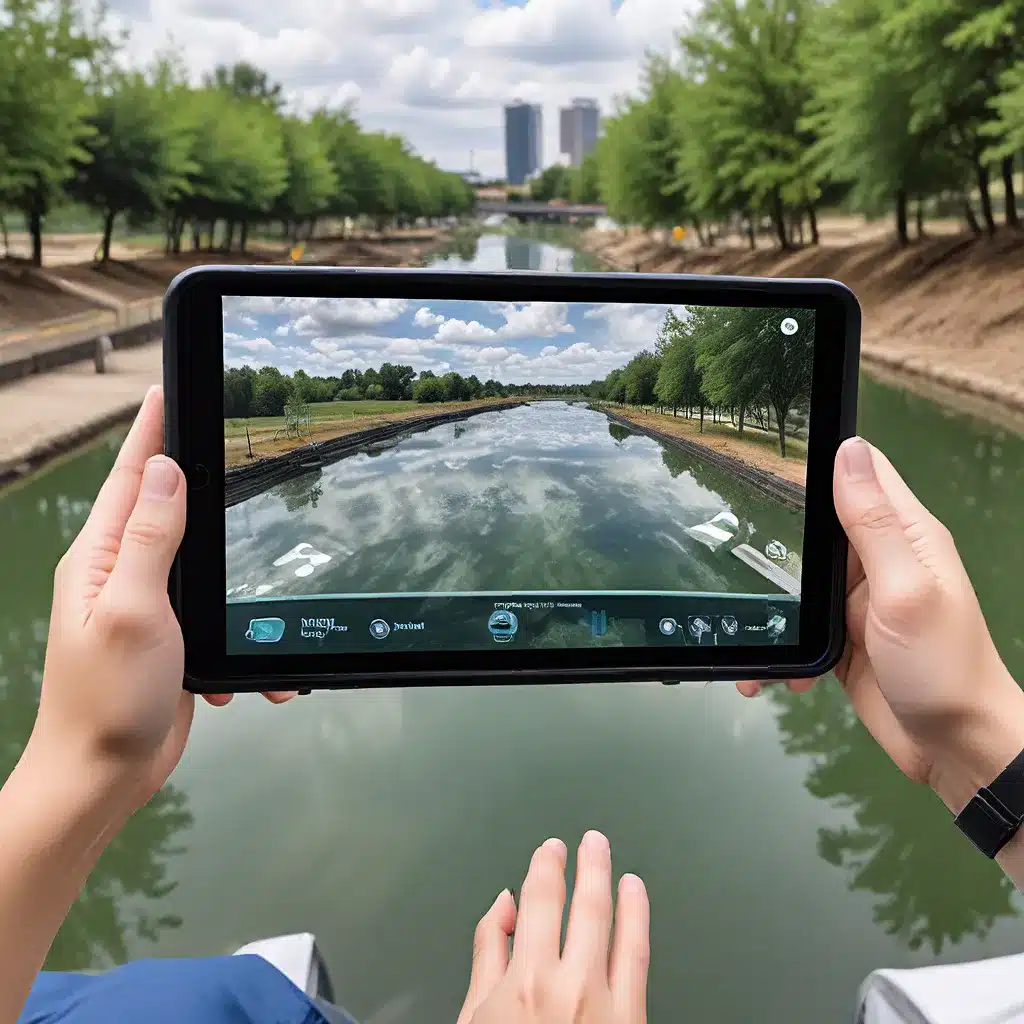
Diving into the Aqueous Abyss: How AR is Revolutionizing Water Treatment
Picture this: you’re standing in the middle of a bustling water treatment facility, surrounded by towering tanks, intricate pipes, and a dizzying array of gauges and control panels. It’s a complex, high-stakes environment where the slightest misstep can have serious consequences. But what if I told you that there’s a technology on the horizon that could transform this landscape, making it safer, more efficient, and more intuitive than ever before?
That technology is augmented reality (AR), and it’s poised to redefine the way we approach water treatment and environmental services. By seamlessly blending digital information with the physical world, AR is opening up new frontiers of possibility – from enhancing worker safety to optimizing operations and even predicting potential issues before they arise.
Seeing the Unseen: AR Transforms the Water Treatment Landscape
Imagine strapping on a pair of AR glasses and suddenly being able to see the invisible. Suddenly, the complex network of pipes and sensors comes alive, with vital data and information overlaid onto your field of vision. You can monitor real-time water quality, track equipment performance, and even visualize potential maintenance needs – all without ever taking your eyes off the task at hand.
Inland Waters, a leading provider of water treatment and environmental services, is at the forefront of this AR revolution. By harnessing the power of this transformative technology, they’re able to empower their teams with the knowledge and insights they need to work more safely, efficiently, and effectively than ever before.
“The way we see it, AR isn’t just a gimmick – it’s a game-changer,” says Alex, a seasoned water treatment specialist at Inland Waters. “With AR, we can literally see the invisible, giving our team a whole new level of situational awareness and control. It’s like having a superpower in the field.”
Unlocking the Power of Real-Time Data
One of the most powerful aspects of AR in the water treatment industry is its ability to integrate real-time data from a variety of sources. Sensors placed throughout the facility can continuously monitor key metrics like water flow, pressure, and chemical levels, feeding this information directly into the AR system.
This allows workers to instantly visualize the current state of the system, making it easier to identify potential issues and take immediate action. But the benefits don’t stop there. By analyzing historical data and using predictive algorithms, the AR system can even anticipate potential problems before they occur, giving teams the opportunity to proactively address them.
“It’s like having a crystal ball for our operations,” explains Alex. “With AR, we can see around corners, so to speak, and stay one step ahead of any emerging challenges. It’s a game-changer when it comes to ensuring the safety and reliability of our water treatment processes.”
Bridging the Knowledge Gap with Guided Workflows
Another exciting aspect of AR in the water treatment industry is its ability to bridge the knowledge gap between experienced workers and new hires. By overlaying step-by-step instructions and visual cues directly onto the physical environment, AR can guide workers through complex tasks and procedures, reducing the risk of errors and ensuring consistent, high-quality outcomes.
“We’ve all been there – that moment when you’re faced with a new piece of equipment or an unfamiliar process, and you’re just hoping you don’t accidentally flood the entire facility,” chuckles Alex. “But with AR, we can provide our team with real-time, contextual guidance, making it easier for them to learn and adapt on the job.”
This not only enhances worker safety but also helps to preserve the institutional knowledge within the organization, ensuring that critical skills and expertise are passed down from one generation to the next.
Embracing the Future: AR and the Water Treatment Industry
As the water treatment industry continues to evolve, the adoption of technologies like augmented reality will only become more crucial. By harnessing the power of this transformative technology, companies like Inland Waters are not only enhancing the safety and efficiency of their operations but also paving the way for a more sustainable, future-proof approach to water management.
“The way I see it, AR is just the beginning,” says Alex, his eyes sparkling with excitement. “As we continue to push the boundaries of what’s possible, I can’t even begin to imagine the ways in which this technology will reshape our industry. But one thing’s for sure – the future is looking a whole lot brighter, and a whole lot safer, thanks to the power of augmented reality.”
So, as you navigate the complex, high-stakes world of water treatment, remember: the secret to success might just be as simple as putting on a pair of AR glasses and seeing the world in a whole new light.


